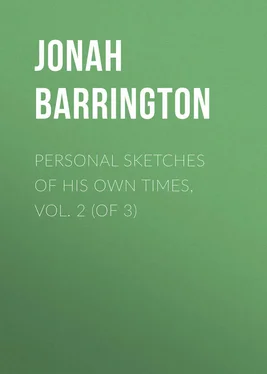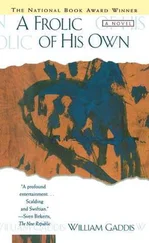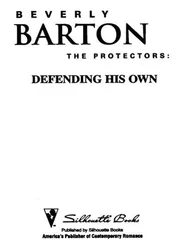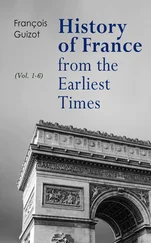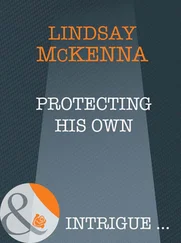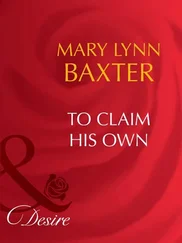Jonah Barrington - Personal Sketches of His Own Times, Vol. 2 (of 3)
Здесь есть возможность читать онлайн «Jonah Barrington - Personal Sketches of His Own Times, Vol. 2 (of 3)» — ознакомительный отрывок электронной книги совершенно бесплатно, а после прочтения отрывка купить полную версию. В некоторых случаях можно слушать аудио, скачать через торрент в формате fb2 и присутствует краткое содержание. Жанр: foreign_antique, foreign_prose, на английском языке. Описание произведения, (предисловие) а так же отзывы посетителей доступны на портале библиотеки ЛибКат.
- Название:Personal Sketches of His Own Times, Vol. 2 (of 3)
- Автор:
- Жанр:
- Год:неизвестен
- ISBN:нет данных
- Рейтинг книги:4 / 5. Голосов: 1
-
Избранное:Добавить в избранное
- Отзывы:
-
Ваша оценка:
- 80
- 1
- 2
- 3
- 4
- 5
Personal Sketches of His Own Times, Vol. 2 (of 3): краткое содержание, описание и аннотация
Предлагаем к чтению аннотацию, описание, краткое содержание или предисловие (зависит от того, что написал сам автор книги «Personal Sketches of His Own Times, Vol. 2 (of 3)»). Если вы не нашли необходимую информацию о книге — напишите в комментариях, мы постараемся отыскать её.
Personal Sketches of His Own Times, Vol. 2 (of 3) — читать онлайн ознакомительный отрывок
Ниже представлен текст книги, разбитый по страницам. Система сохранения места последней прочитанной страницы, позволяет с удобством читать онлайн бесплатно книгу «Personal Sketches of His Own Times, Vol. 2 (of 3)», без необходимости каждый раз заново искать на чём Вы остановились. Поставьте закладку, и сможете в любой момент перейти на страницу, на которой закончили чтение.
Интервал:
Закладка:
Jonah Barrington
Personal Sketches of His Own Times, Vol. 2 (of 3)
THE FIRE-EATERS
Passion for duelling in Ireland – Ancient duel before the judges and law authorities, &c. &c. at the Castle of Dublin – List of official and judicial duellists in author’s time – Family weapons described – The Fire-eaters’ Society – Their chiefs – Elegant institution of the Knights of Tara – Description of them – Their exhibitions and meetings – The rules of duelling and points of honour established by the fire-eaters, called the Thirty-six Commandments – Singular duel between the author and Mr. Richard Daley, a remarkable duellist and fop – Daley hit – Author’s second the celebrated Balloon Crosby – His singular appearance and character.
It may be objected that anecdotes of duelling have more than their due proportion of space in these sketches, and that no writer should publish feats of that nature (if feats they can be called), especially when performed by persons holding grave offices, or by public functionaries. These are very plausible, rational observations, and are now anticipated for the purpose of being answered.
It might be considered a sufficient excuse, that these anecdotes refer to events long past; that they are amusing, and the more so as being matters of fact , (neither romance nor exaggeration,) and so various that no two of them are at all similar. But a better reason can be given; – namely, that there is no other species of detail or anecdote which so clearly illustrates the character, genius, and manners of a country, as that which exemplifies the distinguishing propensities of its population for successive ages. Much knowledge of a people will necessarily be gained by possessing such a series of anecdotes, and by then going on to trace the decline of such propensities to the progress of civilization in that class of society where they had been prevalent.
As to the objection founded on the rank or profession of the parties concerned, it is only necessary to subjoin the following short abstract from a long list of official duellists who have figured away in my time, and some of them before my eyes. – The number of grave personages who appear to have adopted the national taste, (though in most instances it was undoubtedly before their elevation to the bench that they signalised themselves in single combat,) removes from me all imputation of pitching upon and exposing an unusual frailty; and I think I may challenge any country in Europe to show such an assemblage of gallant judicial and official antagonists at fire and sword as is exhibited even in the following list. 1 1 Single combat was formerly a very prevalent and favourite mode of administering justice in Ireland; the letter of that law existed in England; and, not being considered so brutal as bullfights, or other beastly amusements of that nature, it was legally authorised, and frequently performed before the high authorities and their ladies, in the castle-yard of Dublin; — bishops , judges , and other persons of high office, generally honouring the spectacle with their presence. The last exhibition of that nature I have read of was between two Irish gentlemen, Connor Mac Cormac O’Connor, and Teige Mac Kilpatrick O’Connor. They fought with broadswords and skeens (large knives), in the castle of Dublin, in the presence of the archbishop and all the chief authorities and ladies of rank. They had hewed each other for a full hour, when Mr. Mac Kilpatrick O’Connor happening to miss his footing, Mr. Mac Cormac O’Connor began to cut his head off very expertly with his knife; which, after a good deal of cutting, struggling, and hacking, he was at length so fortunate as to effect; and, having got the head clear off the shoulders, he handed it to the lords justices (who were present), and by whom the head and neck was most graciously received.
Earl Clare, Lord Chancellor of Ireland, fought the Master of the Rolls, the Right Honourable John Philpot Curran, with twelve-inch pistols.
The Earl of Clonmell, Chief Justice of the King’s Bench, fought Lord Tyrawly, about his wife, and the Earl Landaff, about his sister; and others, with sword or pistol, on miscellaneous subjects.
The Judge of the County of Dublin, Egan, fought the Master of the Rolls, Roger Barrett, 2 2 On the duel between Judge Egan and Counsellor Roger Barret a curious incident occurred, of hackneyed celebrity, but very illustrative of that volatile eccentricity with which the gravest events were frequently accompanied in that country. On the combatants taking their ground (secundum consuetudinem), Roger (who was the challenger ) immediately fired without much aim, and missing his antagonist, coolly said, “Egan, now my honour is satisfied,” and began to walk away with great stateliness and composure. The judge, however, (who had not fired,) cried aloud, “Hulloa, Roger – hulloa! – stop – stop, Roger; come back here; stay till I take a shot at your honour !” Roger obeyed; and with the same composure cried out, “Very well, fire away, Jack.” Egan presented, and seemed by his motions determined to finish Roger: – at length he cried out, “Pho! pho! I won’t humour you, by G – d! I wouldn’t be bothered shooting you, Roger! – so now you may go to the devil your own road; or shake hands , whichever you like best.” The finale may be anticipated. This circumstance is truly Irish; it took place on the site of Donnybrook fair, and some hundreds of amateurs were present.
and three others; one with swords.
The Chancellor of the Exchequer, the Right Honourable Isaac Corry, fought the Right Honourable Henry Grattan, a privy counsellor, and the chancellor was hit. He also exchanged shots or thrusts with two other gentlemen.
A baron of the exchequer, Baron Medge, fought his brother-in-law and two others – a hit.
The Chief Justice, C. P., Lord Norbury, fought Fire-eater Fitzgerald, and two other gentlemen, muzzle to muzzle, and frightened Napper Tandy and several besides: one hit only. – Napper was near being hanged for running away !
The Judge of the Prerogative Court, Doctor Duigenan, fought one barrister and frightened another on the ground. – The latter case a very curious one.
The First Counsel to the Revenue, Henry Deane Grady, Esq., K. C., fought Counsellor O’Maher, Counsellor Campbell, and others: – very stout work.
The Right Honourable the Master of the Rolls fought Lord Buckinghamshire, (Chief Secretary, &c.) because he would not dismiss an official person.
The Provost of the University of Dublin, the Right Honourable Hely Hutchinson, fought Mr. Doyle, master in Chancery: they went to the plains of Minden to fight!
N.B. The spirit of the Hutchinson family was proverbial, and their good nature was no less so.
The Chief Justice C. P. Patterson fought three country gentlemen, one of them with swords, another with guns, and wounded all of them.
The Right Honourable George Ogle, the Orange chieftain, a privy counsellor, fought Barny Coyle, a whiskey distiller, because he was a papist . – They fired eight shots without stop or stay, and no hit occurred: but Mr. Ogle’s second broke his own arm by tumbling into a potatoe-trench.
Sir Harding Gifford, late Chief Justice of Ceylon, fought the rebel General Bagenal Harvey at a place called the Scalp, near Dublin. The Chief Justice received a severe, but very odd wound. – He eventually, however, suffered no important injury.
Counsellor Dan O’Connell fought the Orange chieftain, who had been halloo’d at him by the corporation. The champion of Protestant ascendancy never rose to fight again.
Читать дальшеИнтервал:
Закладка:
Похожие книги на «Personal Sketches of His Own Times, Vol. 2 (of 3)»
Представляем Вашему вниманию похожие книги на «Personal Sketches of His Own Times, Vol. 2 (of 3)» списком для выбора. Мы отобрали схожую по названию и смыслу литературу в надежде предоставить читателям больше вариантов отыскать новые, интересные, ещё непрочитанные произведения.
Обсуждение, отзывы о книге «Personal Sketches of His Own Times, Vol. 2 (of 3)» и просто собственные мнения читателей. Оставьте ваши комментарии, напишите, что Вы думаете о произведении, его смысле или главных героях. Укажите что конкретно понравилось, а что нет, и почему Вы так считаете.
